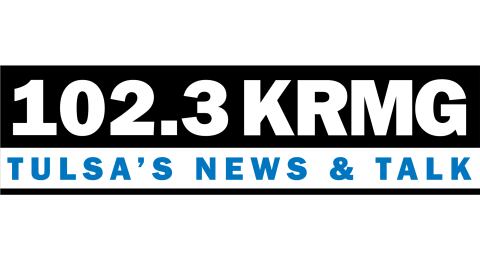As businesses face growing transaction volumes and increasing regulatory requirements, accounts payable teams struggle to maintain efficiency while ensuring payment accuracy. Manual invoice processing creates bottlenecks, increases error risk, and prevents skilled staff from focusing on strategic initiatives that could drive business value.
Invoice matching is at the center of accounts payable, or AP, operations. It validates invoices against purchase orders and receives documents before payment. This systematic verification protects organizations from errors and fraud while enabling efficient payment processing and strong vendor relationships. In fact, a 2024 study by AP firm Medius estimates that invoice fraud costs companies $1 million annually.
Brex explores the evolution of invoice matching from manual verification to automated intelligence, examining different matching types, implementation strategies, and automation benefits, including how modern technology transforms this traditionally time-consuming process into a streamlined workflow that enables scalable, efficient operations—all while helping you maintain robust financial controls.
What Is Invoice Matching?
Invoice matching, also known as purchase order matching, is the systematic comparison of invoices with supporting documentation prior to payment processing. This critical accounts payable function ensures that payments are accurate and properly recorded in the financial system, serving as a key control point in the procurement-to-pay cycle.
The process begins when an employee generates a purchase requisition to request goods or services, whether through a purchase card or direct vendor billing. Once approved by a supervisor, the purchasing department creates a formal purchase order specifying quantities and prices. This purchase order is sent to the vendor, who fulfills the order and generates an invoice. The matching process then verifies alignment between these documents to ensure the transaction's integrity.
Each invoice contains vital information that must be verified during the matching process, including the vendor's identification, customer details, specific products or services provided, transaction dates, quantities delivered, and agreed-upon prices. These elements form the foundation for accurate payment processing and proper financial record-keeping across the organization's accounting system.
Types of Invoice Matching
Organizations employ different levels of invoice matching based on their specific needs, risk tolerance, and transaction complexity. These matching types progress from basic two-way matching to more comprehensive four-way matching, each adding layers of verification and control. The choice between methods depends on factors such as purchase value, industry requirements, and operational complexity.
Two-way matching
Two-way matching compares the purchase order against the vendor invoice, verifying price, quantity, and terms. This method suits simple purchases like office supplies, subscriptions, or routine services where delivery confirmation isn't critical. Organizations benefit from faster processing times and reduced administrative burden.
This basic matching works well for fixed-cost services, digital products, or situations where goods receipt isn't applicable. However, it provides limited control over delivery accuracy and quality assurance. Companies must carefully assess whether this level of verification aligns with their risk management strategy.
Three-way matching
Three-way matching adds goods receipt verification to the process, comparing purchase orders, invoices, and receiving documentation. This method ensures that ordered items are actually delivered before payment processing. It's particularly valuable for inventory-dependent businesses and organizations requiring strict delivery control.
The process typically flows from purchase order creation to goods receipt recording, ending with invoice verification. This additional step significantly reduces payment errors and strengthens inventory accuracy. Manufacturing companies, retailers, and distributors commonly implement three-way matching to maintain tight control over their supply chain.
Four-way matching
Four-way matching incorporates quality inspection results into the verification process, adding crucial quality control documentation. This comprehensive approach suits high-value purchases, critical components, or regulated industries where quality verification is mandatory. Pharmaceutical companies use this method for raw materials, while aerospace manufacturers apply it to critical components.
The added complexity requires robust systems and clear procedures but provides maximum risk mitigation. Organizations must weigh the additional time and resources against the benefits of enhanced quality control.
How Invoice Matching Works
Modern invoice matching combines automated systems with strategic checkpoints to ensure payment accuracy and control. The process begins when invoices enter the system through various channels and flow through validation, matching, and approval stages. Advanced software solutions integrate with enterprise accounting systems, establishing automated workflows while maintaining critical control points.
Organizations leverage optical character recognition, or OCR, artificial intelligence, and robotic process automation to streamline operations. These technologies enable real-time validation against purchase orders and receiving documents while maintaining compliance with internal controls and regulatory requirements. The automation helps you keep track of payments and invoices, reduces processing time, and improves accuracy and auditability.
Receipt of invoices
Organizations receive invoices in multiple formats, from traditional paper to advanced electronic data interchange, or EDI. Modern systems employ intelligent document processing to handle paper invoices through scanning and OCR technology, automatically extracting key data fields. Electronic invoices arrive through vendor portals, email, or direct system integration, enabling immediate processing.
OCR technology transforms paper documents into structured data, while machine learning algorithms improve accuracy over time. EDI and XML formats facilitate direct system-to-system communication, eliminating manual data entry. Initial validation checks confirm basic requirements like tax numbers, purchase order references, and mathematical accuracy before routing invoices to matching workflows.
Data capture and matching
Automated matching systems extract key data points from invoices and compare them against purchase orders and receiving documents in real time. The system validates critical fields, including prices, quantities, payment terms, and tax calculations. Sophisticated algorithms handle variations in formatting and terminology while maintaining accuracy.
Integration with enterprise resource planning, or ERP systems enables real-time validation against master data and business rules. The system tracks match rates and accuracy metrics, providing visibility into process performance. Successful matches flow directly to payment processing, while exceptions route to appropriate personnel for review.
Exception handling
When discrepancies occur, automated workflows route exceptions to designated approvers based on variance type and materiality. Common issues include price mismatches, quantity differences, and missing purchase orders. The system categorizes exceptions by type and urgency, enabling efficient resolution.
Automated resolution paths handle routine variances within predetermined tolerances, while larger discrepancies trigger escalation procedures. The system maintains detailed documentation of resolution steps and approvals, supporting audit requirements. Performance metrics track exception rates, resolution time, and root causes, driving continuous process improvement.
Benefits of automating invoice matching
Automated invoice matching transforms accounts payable operations through improved operational efficiency, accuracy, and financial control. Organizations implementing these solutions report significant improvements in processing speed, cost reduction, and compliance.
Improves operational efficiency
Automated matching systems reduce invoice processing time by eliminating manual data entry and validation steps. Organizations can handle increasing transaction volumes without additional staffing, enabling AP teams to process more invoices with existing resources. This shift frees staff from repetitive tasks, allowing them to focus on strategic activities like vendor management and vendor payment automation.
Maximizes financial returns
The operational improvements from automation translate directly into financial benefits. By eliminating manual handling and paper-based processes, organizations significantly reduce processing costs per invoice. Faster processing and approval cycles enable companies to capture more early payment discounts, helping improve cash flow and support better working capital management and strategic payment timing decisions.
Strengthens control and compliance
As organizations process higher volumes of invoices, maintaining control becomes increasingly critical. Automated systems apply consistent validation rules and matching criteria, dramatically reducing error rates. Built-in controls automatically flag potential fraud patterns and enforce compliance requirements, while comprehensive digital audit trails document all matching activities and approvals, streamlining audit processes.
Transforms process management
The impact of automation extends beyond immediate efficiency gains. AP staff members transition from routine matching tasks to focus on exception handling, vendor management, and company expense cards oversight. Real-time visibility into invoice status enables proactive issue management and data-driven decision-making. These improvements lead to enhanced supplier satisfaction through consistent, accurate payments and faster issue resolution.
The automation of invoice matching represents a fundamental shift in how organizations manage their accounts payable process. It delivers measurable improvements across operations, finance, compliance, and process management. Organizations that deploy these solutions position themselves for sustainable growth while strengthening financial controls and vendor relationships.
Ways to Improve Your Invoice Matching Process
Successful invoice matching hinges on well-designed processes and the effective use of technology. By implementing strategic improvements in key areas, organizations can significantly enhance their matching accuracy while reducing processing time.
Implement automation software
Deploy automated matching software to verify invoices against purchase orders and receipts. This reduces manual effort and errors while accelerating processing. Modern invoice automation software can validate key fields, apply matching rules, and route exceptions automatically.
Establish clear matching rules
Define specific criteria for successful matches, including acceptable variances in quantities and prices. Set tolerance levels for minor discrepancies to reduce unnecessary manual reviews. Create documented guidelines for different transaction types and amounts.
Standardize data capture
Implement e-invoicing and consistent data formats across all incoming invoices, and require vendors to include essential fields like PO numbers, line-item details, and payment terms. Use OCR technology for paper invoices to ensure standardized digital processing.
Streamline exception management
Create clear workflows for handling discrepancies, with defined escalation paths and response timeframes. Implement automated routing based on exception type and value, and track resolution metrics to identify common issues and improvement opportunities.
Optimize vendor collaboration
Establish clear guidelines for invoice submission and communicate requirements effectively to suppliers. Provide self-service portals for vendors to check invoice status and resolve common issues. Regular vendor communication also reduces exceptions and improves matching accuracy.
These improvements strengthen invoice-matching accuracy while reducing processing time and costs. Regular monitoring of key metrics ensures continuous process optimization.
Transform Your Invoice Processing Today
The finance industry has witnessed a remarkable transformation in invoice-matching capabilities over the past decade. What began as a manual, error-prone process has evolved into an intelligent, automated workflow powered by advanced technology that has allowed companies to automate invoice processing. Organizations adopting these solutions report dramatic improvements in efficiency and accuracy, while strengthening vendor relationships and financial controls. Looking ahead, continued advances in artificial intelligence and machine learning promise even greater automation potential, enabling predictive analytics and strategic cash flow optimization.







